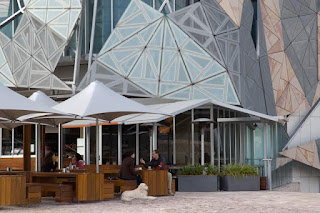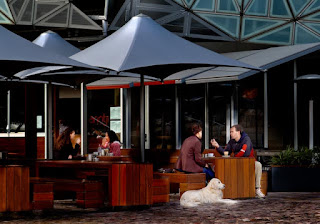In the days of film cameras, photographers (particularly amateurs) had to be pretty miserly with their shooting habits. Film was expensive to buy and process.
Now that we are well into the era of digital imaging, photographers are finding that they can take many more images. Memory cards are getting bigger and cheaper on an almost daily basis, so many of us are extremely trigger-happy. What this does for our photographic ability is probably a topic for another day, but it certainly does present a question or two about which images to discard and which to keep.
I suppose the first criterion for determining which photographs to keep is the amount of storage you have. Like camera memory cards, external hard drives are also becoming larger and cheaper. So there is probably no real problem for most of us to keep as many images as we want.
The next factor to consider is the quality of the shot. I make sure that I immediately delete those images that are so badly exposed or so out of focus that they are not usable in any way at all. (Yes, I still have them! And so does any photographer who likes to experiment.) But beyond that, I tend to keep rather than discard. Why?
Well, there are a couple of reasons to keep images that are poorly composed or only mildly under- or over-exposed. Firstly, let me emphasise that, in my own case, I shoot RAW images. These are images that are not altered in the camera - no compression (JPEG files are compressed files), no colour enhancement, no sharpening. This allows me to keep "the negative" as it were, so that the original image can be used again and again.
One reason I do this is that technology changes. Another reason is that my ability to use technology also changes.
Let me illustrate by way of an example. We just had a wet weekend here, and they have been rather rare recently. But a wet weekend is a perfect time to browse through your old photos to see whether they can be improved.
Here is a picture I took three years ago. It wasn't good enough to use for anything at the time, but I kept the RAW file in my image library.
Since then though, a couple of things have happened.
Firstly, I started to use Adobe Photoshop CS3. Previously I was using Adobe Photoshop Elements, which is a very good piece of software. But Photoshop CS3 is far more sophisticated and can do so much more. And indeed, there is a learning curve involved. I bought and read some books (check out those by Scott Kelby at http://www.scottkelby.com/books.html ), and I also signed up for some free web seminars run by Adobe that were absolutely fantastic. Your local library probably has a selection of books on this topic too. I use my library quite often.
Anyway, I was browsing through my images recently when I came across this one and thought that it had potential for a make-over.
What I saw that needed improvement were the composition and the lighting. The point of interest should be the couple with the dog, and unfortunately I have them centred right in the middle of the image.
There is also too much extraneous material, so some judicious cropping was required.

Here is my reworked image. I cropped away most of the architecture of the building above the cafe because it isn't essential to the photo I had in mind.
While doing that, I was able to position the couple with the dog somewhere more in keeping with the rule of thirds.
The image was too light though, and I needed to do something about that. The sails and the building above the cafe were darkened, as well as the timber tables in the cafe. By using a Layer Mask in Photoshop, I was able to prevent this darkening from applying to the couple and the dog, and the result makes them a much more prominent part of the image.
Unfortunately it is beyond the scope of this blog to give a step-by-step set of instructions. These are easily obtained in Scott Kelby's books (that's where I learned them!), and my intention with this blog is to show the possibilities and let you discover the process yourself.
So, by all means throw out those images that are readily recognised as being total failures.
But keep the rest. You might use them one day!
EXIF: Nikon D70; Nikkor 18-70mm; ISO 200; 1/50 sec; f11.
TFF
Now that we are well into the era of digital imaging, photographers are finding that they can take many more images. Memory cards are getting bigger and cheaper on an almost daily basis, so many of us are extremely trigger-happy. What this does for our photographic ability is probably a topic for another day, but it certainly does present a question or two about which images to discard and which to keep.
I suppose the first criterion for determining which photographs to keep is the amount of storage you have. Like camera memory cards, external hard drives are also becoming larger and cheaper. So there is probably no real problem for most of us to keep as many images as we want.
The next factor to consider is the quality of the shot. I make sure that I immediately delete those images that are so badly exposed or so out of focus that they are not usable in any way at all. (Yes, I still have them! And so does any photographer who likes to experiment.) But beyond that, I tend to keep rather than discard. Why?
Well, there are a couple of reasons to keep images that are poorly composed or only mildly under- or over-exposed. Firstly, let me emphasise that, in my own case, I shoot RAW images. These are images that are not altered in the camera - no compression (JPEG files are compressed files), no colour enhancement, no sharpening. This allows me to keep "the negative" as it were, so that the original image can be used again and again.
One reason I do this is that technology changes. Another reason is that my ability to use technology also changes.
Let me illustrate by way of an example. We just had a wet weekend here, and they have been rather rare recently. But a wet weekend is a perfect time to browse through your old photos to see whether they can be improved.
Here is a picture I took three years ago. It wasn't good enough to use for anything at the time, but I kept the RAW file in my image library.
Since then though, a couple of things have happened.
Firstly, I started to use Adobe Photoshop CS3. Previously I was using Adobe Photoshop Elements, which is a very good piece of software. But Photoshop CS3 is far more sophisticated and can do so much more. And indeed, there is a learning curve involved. I bought and read some books (check out those by Scott Kelby at http://www.scottkelby.com/books.html ), and I also signed up for some free web seminars run by Adobe that were absolutely fantastic. Your local library probably has a selection of books on this topic too. I use my library quite often.

Anyway, I was browsing through my images recently when I came across this one and thought that it had potential for a make-over.
What I saw that needed improvement were the composition and the lighting. The point of interest should be the couple with the dog, and unfortunately I have them centred right in the middle of the image.
There is also too much extraneous material, so some judicious cropping was required.

Here is my reworked image. I cropped away most of the architecture of the building above the cafe because it isn't essential to the photo I had in mind.
While doing that, I was able to position the couple with the dog somewhere more in keeping with the rule of thirds.
The image was too light though, and I needed to do something about that. The sails and the building above the cafe were darkened, as well as the timber tables in the cafe. By using a Layer Mask in Photoshop, I was able to prevent this darkening from applying to the couple and the dog, and the result makes them a much more prominent part of the image.
Unfortunately it is beyond the scope of this blog to give a step-by-step set of instructions. These are easily obtained in Scott Kelby's books (that's where I learned them!), and my intention with this blog is to show the possibilities and let you discover the process yourself.
So, by all means throw out those images that are readily recognised as being total failures.
But keep the rest. You might use them one day!
EXIF: Nikon D70; Nikkor 18-70mm; ISO 200; 1/50 sec; f11.
TFF
No comments:
Post a Comment